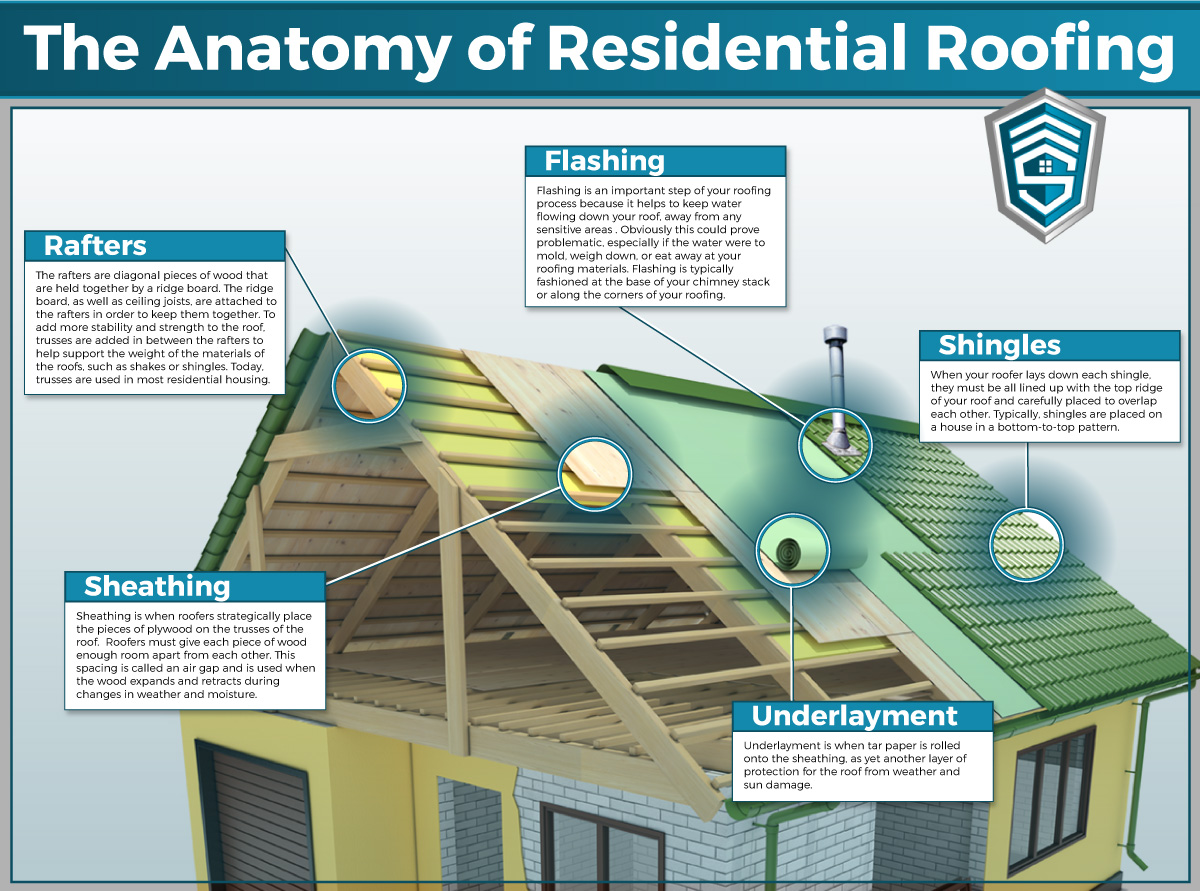The Feature Of Roof Ventilation In Guaranteeing An Effective Installation
The Feature Of Roof Ventilation In Guaranteeing An Effective Installation
Blog Article
Web Content Author-Morrow Walls
When you're taking on a roof job, you may not believe much about roofing air flow, yet it's more critical than you understand. Effective ventilation helps control temperature and dampness in your attic, stopping problems like mold and structural damage. By https://residentialroofingcompany17394.madmouseblog.com/12884733/assessing-metal-roof-against-roof-shingles-roofing-advantages-and-downsides how to make and set up a balanced ventilation system, you can enhance power performance and lengthen the lifespan of your roof covering products. So, what are roof repair to consider during installment that can make all the distinction?
Relevance of Roof Covering Ventilation
Roofing system air flow plays an important function in keeping the total health and wellness of your home. By permitting fresh air to flow through your attic, it assists control temperature level and dampness degrees. This equilibrium is necessary to prevent warm build-up throughout warm months, which can cause enhanced power expenses as your air conditioning burns the midnight oil.
Moreover, correct air flow substantially decreases the threat of moisture-related concerns like mold and mold. If moisture levels increase, your home's architectural honesty can be compromised, causing costly repair services. You would not want to handle decomposing wood or deformed roof covering products, right?
Furthermore, ample air flow extends the lifespan of your roofing system. When heat and moisture are kept in check, your roofing system can execute optimally, preventing early damage. This suggests less frustrations and expenses down the line.
Just How Roofing Ventilation Works
Effective roofing system ventilation relies on the all-natural movement of air to create an equilibrium in between intake and exhaust. When you install vents, you're essentially enabling fresh air to enter your attic room while enabling hot, stale air to escape. This process helps manage temperature level and wetness levels, preventing concerns like mold development and roof covering damage.
Intake vents, normally discovered at the eaves, reel in cool air from outside. On the other hand, exhaust vents, located near the ridge of the roofing system, allow hot air rise and departure. The difference in temperature level develops an all-natural airflow, called the stack result. As warm air increases, it produces a vacuum cleaner that pulls in cooler air from the reduced vents.
To maximize this system, you need to guarantee that the consumption and exhaust vents are properly sized and positioned. If the consumption is limited, you will not achieve the desired air flow.
Also, insufficient exhaust can catch warmth and wetness, bring about potential damages.
Trick Installation Considerations
When installing roof ventilation, a number of essential considerations can make or damage your system's performance. Initially, you need to assess your roofing system's layout. The pitch, form, and materials all influence airflow and air flow option. See to https://blockclubchicago.org/2021/02/19/huge-icicles-heavy-snow-or-ice-dams-on-your-roof-heres-what-experts-say-you-should-do/ to choose vents that match your roofing kind and regional climate problems.
Next, think about please click the following article of your vents. Ideally, you'll desire a balanced system with intake and exhaust vents placed for ideal airflow. Location consumption vents short on the roofing system and exhaust vents near the height to motivate an all-natural flow of air. This configuration helps avoid dampness build-up and advertises power effectiveness.
Don't forget about insulation. Correct insulation in your attic avoids heat from leaving and maintains your home comfortable. Guarantee that insulation does not obstruct your vents, as this can prevent air flow.
Last but not least, think about upkeep. Choose ventilation systems that are easy to gain access to for cleansing and assessment. Normal upkeep ensures your system remains to function effectively over time.
Verdict
Finally, roofing system air flow is necessary for a successful setup. By guaranteeing appropriate air flow, you can prevent heat accumulation and wetness concerns that bring about expensive damages. When you purposefully setting intake and exhaust vents, you enhance energy performance and lengthen the life-span of your roof. Keep in mind, a well-ventilated roof covering not only secures your investment however likewise improves your interior air high quality. So, prioritize air flow to guarantee a resistant and cost-effective roof for your home.
